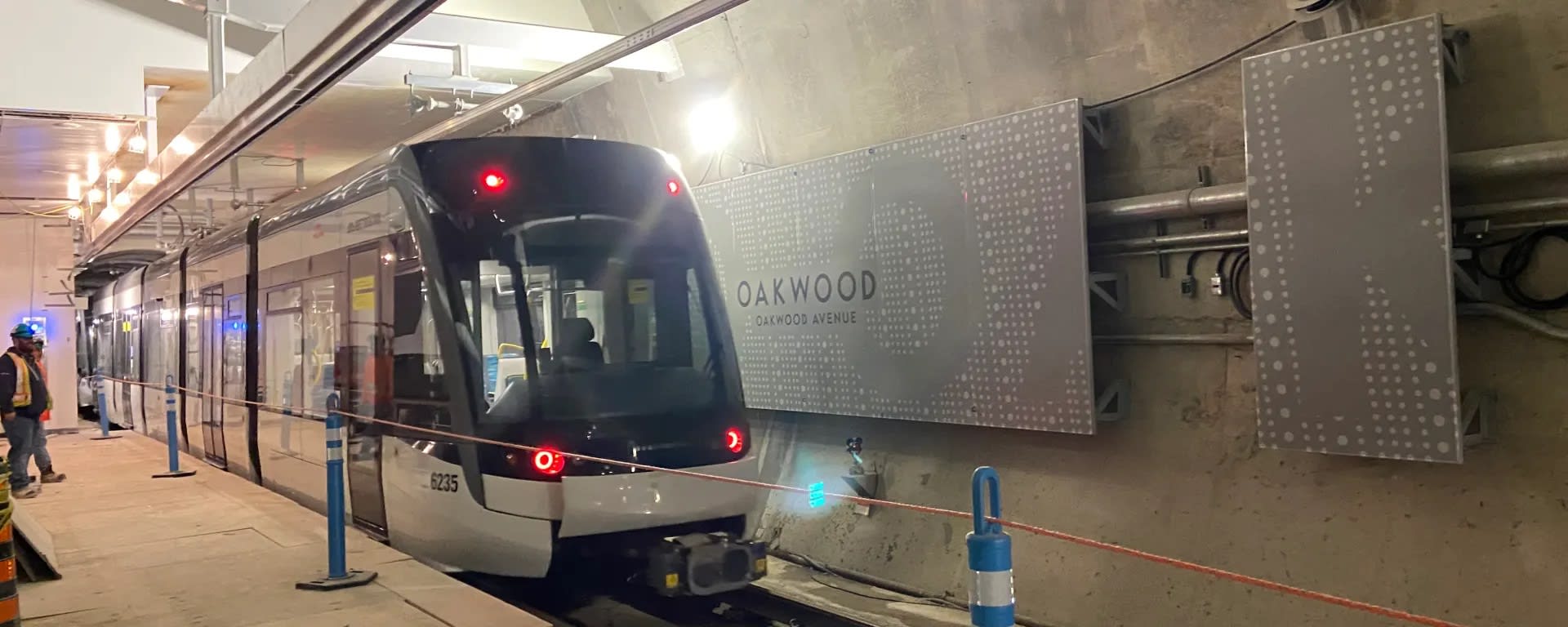What is LRT? Light rail transit explained
Is it a streetcar? Is it a subway? Metrolinx News is going back to the basics on light rail transit.
Jan 4, 2022
Metrolinx News constantly offers up transit project updates through photos, videos, and graphics.
This content is our bread and butter.
So we may take some background for granted.
There have been countless stories on the light rail transit (LRT) projects happening within the Greater Toronto Hamilton Area (GTHA). From Toronto, Mississauga, and Hamilton, there is no shortage of LRT work happening these days.
But we recently noticed a trend when it comes to online searches. In this case, many people are asking ‘What is an LRT line?’
So we thought we would answer that, as well as explain what makes it different from current transit options in the GTHA.
LRT is a transportation system based on electrically powered light rail vehicles (LRV) that operates on a track in a dedicated right-of-way (meaning separated lanes). They are designed to deliver rapid, reliable, and safe transportation services.
Depending on the project, in the event of a schedule delay, some LRTs have the ability to change the traffic lights to green as they approach, so they can move even quicker along the route.
Grand River Transit’s ION LRT line in action. (Jason897 photo)
LRT is growing in popularity for major cities around the world, including right here in Canada, as it provides significant transit capacity without the expense and density needed for subway systems. Waterloo and Calgary both have popular modern LRT lines. Los Angeles, Portland, Prague, and Paris too.
An LRT stops outside Université de Paris, one of many light rail lines in and around Paris, France. (Cramos78 photo)
LRT lines can run at street level, like a streetcar. However, the dedicated right-of-way means the LRV is not impacted by vehicular traffic and can reach higher top speeds than a regular streetcar – in some cases, up to 80 km/h.
Another cool feature, LRTs can run below ground like a subway. Which is the case for much of the Eglinton Crosstown LRT route.
Streetcars often need a ‘loop’ in order to turn around. Light rail vehicles, like the ones on the Eglinton Crosstown line, will be bilateral, meaning it can be driven at either end.
A Eglinton Crosstown light rail vehicle is seen driving the route, seperated from car traffic, powered by the overhead wires. (Metrolinx photo)
LRV’s aren’t as long as subways, but multiple LRVs, or trains, can be coupled together to form a longer train if needed. The Alstom Citadis Spirit for example, the type of vehicle being used for the Hurontario LRT project, has a seated passenger capacity of 120 and maximum passenger capacity of 292.
Mockup of the Alstom Citadis Spirit that will be used on the Hurontario LRT line. (Metrolinx image)
Power behind the system
Subways get their power from an electrified rail below the vehicle. This requires larger stations, more infrastructure and safety separation. An LRV gets its power from a cable over head, like a streetcar, meaning passengers can easily catch their ride from a stop located on the roadway.
Light rail transit is currently being used in many cities around the world. The new light rail projects being built in Toronto, Mississauga, and Hamilton will transform these cities, offering communities a convenient and safe way to get around.
We’ll look to get back to basics with other transit terms we often write about. But for now, we hope these lines have helped get you up to speed on LRTs.
by Erika D’Urbano Communications senior advisor
